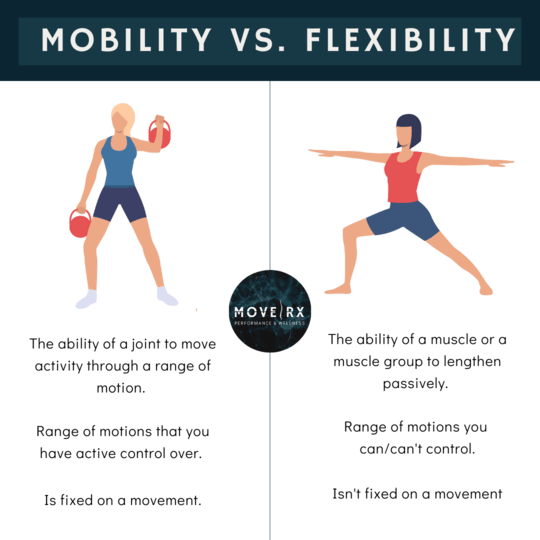Flexibility vs Mobility: Yes there is a difference
It is common for people to use flexibility and mobility synonymously. However, the two terms mean very different things.
Diagram showcases the difference between Mobility vs Flexibility.
Flexibility
Flexibility is defined as the “ability of a muscle/muscle groups to lengthen passively through a range of motion.” As a result, the body segment is relaxed, and the surrounding connective tissues (tendons, ligaments, fascia) determine the body's natural range of motion.
Flexibility drills commonly include holding positions for anywhere from 30-90 seconds. These drills lengthen and relax the tissues but also loosen the neuromuscular connection to those muscles.
The Benefit of Training Flexibility
Training flexibility allows for
Increased Range of Motion – flexibility allows for a better range in your joints, allowing you to move freely, and is a significant benefit for activities which require twists and bending.
Improve Muscle Balance – Flexibility promotes muscle balance as some muscles are overly tight while others are compromised or offset.
Examples of Flexibility Exercises
Static stretching – holding stretches for a certain period to lengthen the muscle, including hamstring or quad stretches.
Dynamic stretches – moving a muscle or a joint through a range of motion in a controlled manner. Including arm circles and hamstring stretches.
However, it is worth noting that studies have failed to prove the long-term benefit of static stretching (flexibility) before an activity due to its temporary benefits.
Mobility
Mobility is “the ability of a joint to move actively through a range of motion.” This states that an individual's ability to control movement (or motor control) through a joint will determine their mobility. So, mobility training is more than a full ‘ass-to-grass squat’, and it can greatly benefit your warmup routine. Why? Because it focuses on movement and control, which we need for healthy, pain-free, full-range daily movement.
The Benefit of Training Mobility
Training mobility will
Enhance your neuromuscular connection (brain-to-muscle connection).
Improve your biomechanical function through your activity or exercises.
Increase your stability and strength gains in this newfound range of motion you have discovered.
Mobility training improves blood flow to the targeted muscles, increases joint range of motion, lengthens the muscles and connective tissues (fascia) and decreases tension.
Mobility improves posture and, in turn, reduces the risk of injury. See our PDF for better posture for a few examples of movements for better posture. (link)
If you have difficulty controlling your movement in a specific range, your brain will automatically limit that range. Therefore, it is best to work on mobility every day. Consistent practice and focus on moving better through mobility training creates a domino effect of feeling better, training better, and performing better.
Examples of Mobility Exercises
Active range of motion – Actively moving a joint through its full range without external assistance. Examples include shoulder circles, hip circles, or neck rotations.
Who Does Mobility Help?
Mobility is for everyone, as mobility is how your body reacts in everyday situations, from how you walk, if you slip and fall, and how your body feels during and after your exercise routine.
Mobility for Athletes – Mobility is critical in athletic performance and injury prevention. Mobility is closely related to aspects of performance such as flexibility, range of motion, agility, speed, power, and endurance.
Mobility for Adults – Mobility impacts the activities of daily living for tasks such as walking, climbing stairs, bending and lifting.
Mobility for Seniors – The older you get, the more critical it is to focus on mobility. Mobility allows you to walk without assistance, prevent falls, increase balance, etc.
Challenges for Maintaining Mobility
Lifestyle factors such as an increasingly sedentary lifestyle (working at desks for long hours, for example), aging, injuries or surgeries, poor posture, or lack of physical activities or exercise affects our mobility. As a result, these factors lead to muscle tightness, joint stiffness, poor posture and decreased mobility over time.
What Can You Do to Improve Mobility?
This blog has discussed the importance of continual work on mobility. If you need help with mobility, see our Instagram for mobility tips and tricks.
If you are in the Kelowna area and want to learn more. Move RX offers a free, no-obligation consultation where we see your mobility levels. Our chiropractors can then design a complete custom mobility plan for you.
In addition, Move RX offers Group mobility classes, which you learn more about here. Or you can book a spot in our group class here directly.
Click the Schedule a Consultation button below.

